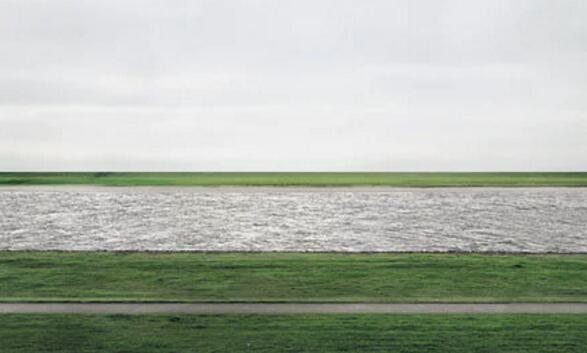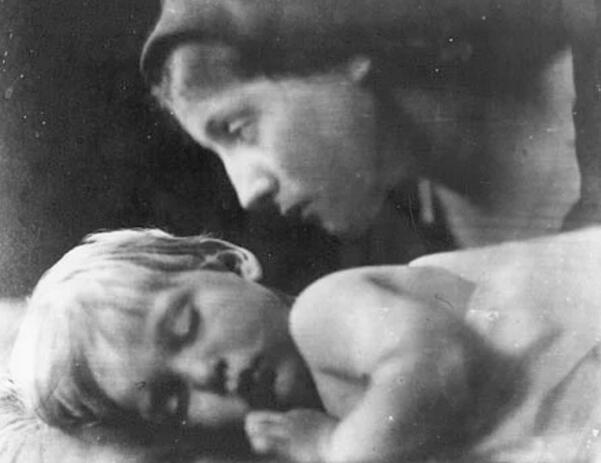托福分数测试HOT
托福课程优惠HOT
托福正价课试听0元
新托福机考练习NEW
0元讲座HOT
新版托福入门课程HOT
托福入门导学NEW
4000人报
托福机经
PDF版
TPO练习
官方授权
资料下载
826套
专业测评
40118人已测
高分经验
1193帖

扫码免费领资料
内含托福全科备考资料
更有免费水平测试及备考规划

扫码关注掌握一手留学资讯
回复XDF免费水平测试
4月15日托福听力中考到关于照相技术发展的内容,为了帮助大家熟悉2017年4月15日托福听力考试内容,新东方在线托福网为大家带来托福听力背景知识:照相技术发展一文,希望对大家托福备考有所帮助。更多精彩尽请关注2017年4月15日托福考情回顾总结(http://toefl.koolearn.com)!
photograph也是艺术这篇内容出现在4月15日托福听力题目中,内容大概为:photograph可以record life in seconds,但是有些人觉得这并不是艺术,其实它也是艺术的一种,比如它可以通过某些软件来替换background,让本来的颜色变深或者变淡,还有利用镜头(lens)来从不同的角度拍摄,这都是艺术的表现。
Photography: is it art?
From the earliest days of photography, practitioners took their inspiration from paintings. But as a new exhibition at London's National Gallery shows, the link went both ways

Andreas Gursky's Rhein II fetched £2.7m last year, setting a record for any photograph sold at auction. Photograph: Andreas Gursky/AP Photo/Christie'sView more sharing optionsShares610Michael Prodger
For 180-years, people have been asking the question: is photography art? At an early meeting of the Photographic Society of London, established in 1853, one of the members complained that the new technique was "too literal to compete with works of art" because it was unable to "elevate the imagination". This conception of photography as a mechanical recording medium never fully died away. Even by the 1960s and 70s, art photography – the idea that photographs could capture more than just surface appearances – was, in the words of the photographer Jeff Wall, a "photo ghetto" of niche galleries, aficionados and publications.
But over the past few decades the question has been heard with ever decreasing frequency. When Andreas Gursky's photograph of a grey river Rhine under an equally colourless sky sold for a world record price of £2.7 million last year, the debate was effectively over. As if to give its own patrician signal of approval, the National Gallery is now holding its first major exhibition of photography, Seduced by Art: Photography Past and Present.
The show is not a survey but rather examines how photography's earliest practitioners looked to paintings when they were first exploring their technology's potential, and how their modern descendants are looking both to those photographic old masters and in turn to the old master paintings.
What paintings offered was a catalogue of transferable subjects, from portraits to nudes, still lifes to landscapes, that photographers could mimic and adapt. Because of the lengthy exposures necessary for early cameras, moving subjects were impossible to capture. The earliest known photograph of a person was taken inadvertently by Louis Daguerre – with Henry Fox Talbot one of photography's two great pioneers – when he set up his camera high above the Boulevard de Temple in Paris in 1838. His 10-minute exposure time meant that passing traffic and pedestrians moved too fast to register on the plate, but a boulevardier stood still long enough for both him and the bootblack who buffed his shoes to be captured for ever.
When Daguerre turned his camera on people rather than places the results were revelatory. Elizabeth Barrett Browning was so struck by Daguerreotypes that she rhapsodised over "the very shadow of the person lying there fixed forever". The fidelity of features captured meant that she "would rather have such a memorial of one I dearly loved, than the noblest Artist's work ever produced" not "in respect (or disrespect) of Art, but for Love's sake". If, however, her photographer followed the advice of Eugène Disdéri, who wrote in 1863 that: "It is in the works of the great masters that we must study the simple, yet grand, method of composing a portrait," she could satisfy love with both physiognomy and art.

My Grandchild by Julia Margaret Cameron. Photograph: Hulton/Getty
What some pioneering photographers recognised straight away was that photographs, like paintings, are artificially constructed portrayals: they too had to be carefully composed, lit and produced. Julia Margaret Cameron made this explicit in her re-envisagings of renaissance pictures. Her Light and Love of 1865, for example, shows a woman in a Marian headcovering bending over her infant who is sleeping on a bed of straw. It is part of a line of nativity scenes that is as long as Christian art, and was hailed by one critic as the photographic equivalent of "the method of drawing employed by the great Italian masters". I Wait, 1872, shows a child with angel's wings resting its chin on folded arms and wearing the bored expression that brings to mind the underwhelmed cherubs in Raphael's Sistine Madonna. Such photographs were not direct quotations from paintings, but they raised in the viewer's mind a string of associations that gave photography a historical hinterland.
本文关键字: 2017年4月15日托福 托福听力背景资料

 资料下载
资料下载
2021-2024托福机经试题|答案|范文下载
发布时间:2024-02-21关注新东方在线托福
回复【XDF】获取
托福全科备考资料大礼包
发布时间:2024-02-21关注新东方在线托福
回复【XDF】获取
托福正价课试听课程包
发布时间:2024-02-21关注新东方在线托福
回复【XDF】获取
托福定制备考规划
发布时间:2024-02-21关注新东方在线托福
回复【XDF】获取
托福TPO免费模考
发布时间:2024-02-21关注新东方在线托福
回复【XDF】获取
托福免费水平测试
发布时间:2024-02-21关注新东方在线托福
回复【XDF】获取
托福写作新题型模拟题+范文汇总[ETS发布]
发布时间:2023-07-30关注新东方在线托福
回复【XDF】获取
2023全年托福机经PDF版下载
发布时间:2023-06-17关注新东方在线托福
回复【XDF】获取
2022全年托福机经PDF版下载
发布时间:2023-06-17关注新东方在线托福
回复【XDF】获取
2022全年写作托福机经整理
发布时间:2023-01-13关注新东方在线托福
回复【XDF】获取
2022年托福考后题目回忆
发布时间:2023-01-13关注新东方在线托福
回复【XDF】获取
托福口语黄金80题附录音
发布时间:2023-01-13关注新东方在线托福
回复【XDF】获取
新东方IBT写作网络课堂录音[.rar]
发布时间:2023-01-13关注新东方在线托福
回复【XDF】获取
21天托福听力提升计划
发布时间:2023-01-13关注新东方在线托福
回复【XDF】获取
不怕跑题偏题,这份写作资料请收好
发布时间:2023-01-13关注新东方在线托福
回复【XDF】获取
托福阅读提分技巧锦囊妙计
发布时间:2023-01-13关注新东方在线托福
回复【XDF】获取
口语拖后腿?因为你缺少这套万能句式资料
发布时间:2019-11-01关注新东方在线托福
回复【XDF】获取
攻破托福听力难关的资料包
发布时间:2023-01-13关注新东方在线托福
回复【XDF】获取
看剧学英语,经典美剧一键获取
发布时间:2019-11-01关注新东方在线托福
回复【XDF】获取
原版外刊资源合集|精心打包整理
发布时间:2019-11-01关注新东方在线托福
回复【XDF】获取

关注新东方在线托福,
回复【XDF】获取大礼包

 推荐阅读
推荐阅读
很多考生对托福听力评分表一知半解,不知道如何根据自己的听力水平和目标分数来制定合理的备考计划和策略。本文将为你揭开托福听力评分表的秘密,告诉你如何提高你的听力分数。
托福听力是托福考试的重要部分,也是很多考生的难点。托福听力的评分标准和评分表是什么?如何根据托福听力评分表提高听力水平?本文将为你详细解答。
新东方在线托福整理了托福听力评分表、托福听力TPO练习网站、听力考试时长和题型等内容,今天带来的是托福听力28题改革后评分标准,帮助大家更好地了解托福听力考试,从而轻松应对托福考试!
新东方在线托福整理了托福听力评分表、托福听力TPO练习网站、听力考试时长和题型等内容,今天带来的是新托福听力28道题评分标准和分数对照表,帮助大家更好地了解托福听力考试,从而轻松应对托福考试!
新东方在线托福整理了托福听力评分表、托福听力TPO练习网站、听力考试时长和题型等内容,今天带来的是2023新版托福评分表28道题及算分标准汇总,帮助大家更好地了解托福听力考试,从而轻松应对托福考试!



 资料下载
资料下载
关注新东方在线托福
回复【XDF】获取
关注新东方在线托福
回复【XDF】获取
关注新东方在线托福
回复【XDF】获取
关注新东方在线托福
回复【XDF】获取
关注新东方在线托福
回复【XDF】获取
关注新东方在线托福
回复【XDF】获取
关注新东方在线托福
回复【XDF】获取
关注新东方在线托福
回复【XDF】获取
关注新东方在线托福
回复【XDF】获取
关注新东方在线托福
回复【XDF】获取
关注新东方在线托福
回复【XDF】获取
关注新东方在线托福
回复【XDF】获取
关注新东方在线托福
回复【XDF】获取
关注新东方在线托福
回复【XDF】获取
关注新东方在线托福
回复【XDF】获取
关注新东方在线托福
回复【XDF】获取
关注新东方在线托福
回复【XDF】获取
关注新东方在线托福
回复【XDF】获取
关注新东方在线托福
回复【XDF】获取
关注新东方在线托福
回复【XDF】获取

 阅读排行榜
阅读排行榜
 相关内容
相关内容